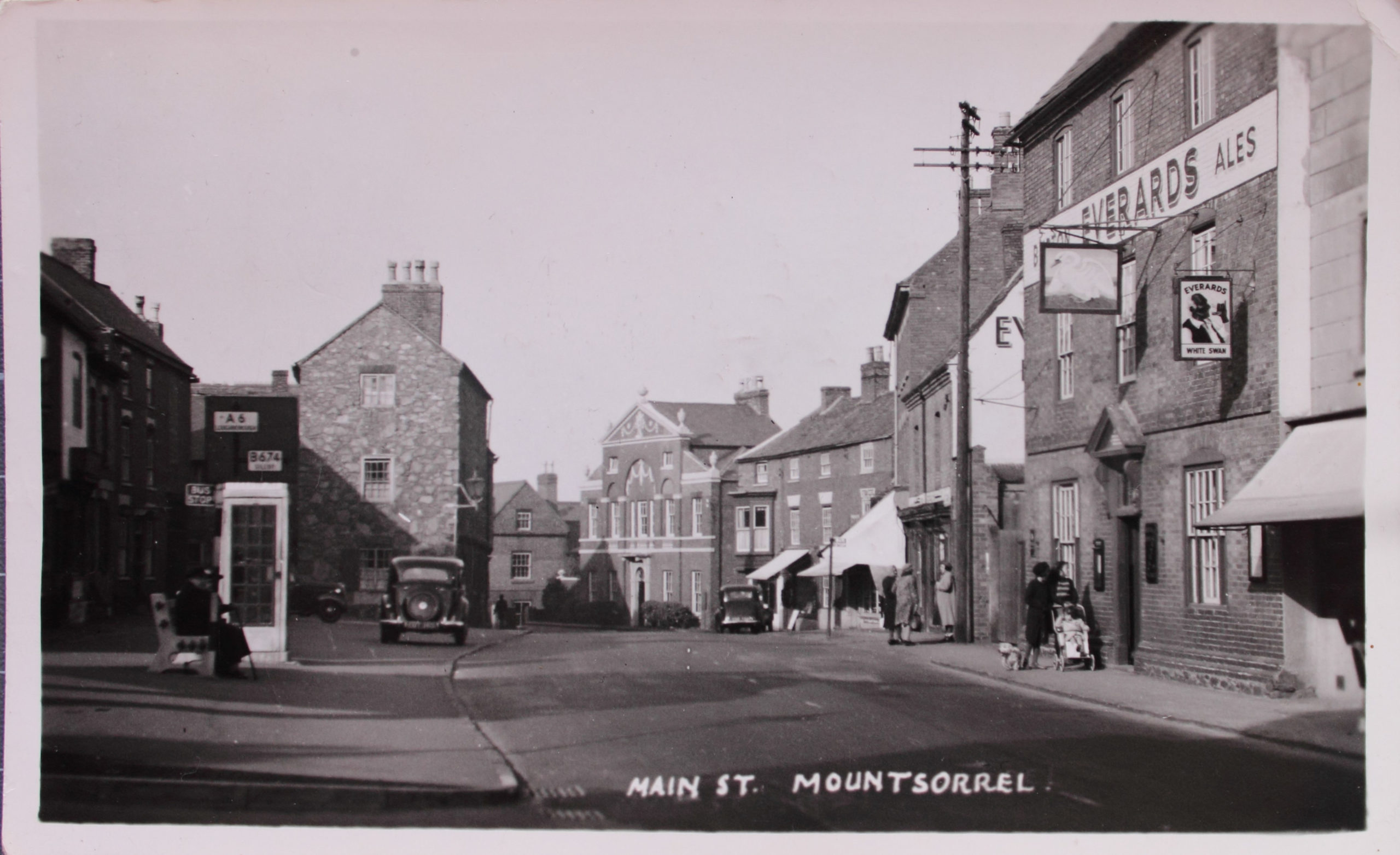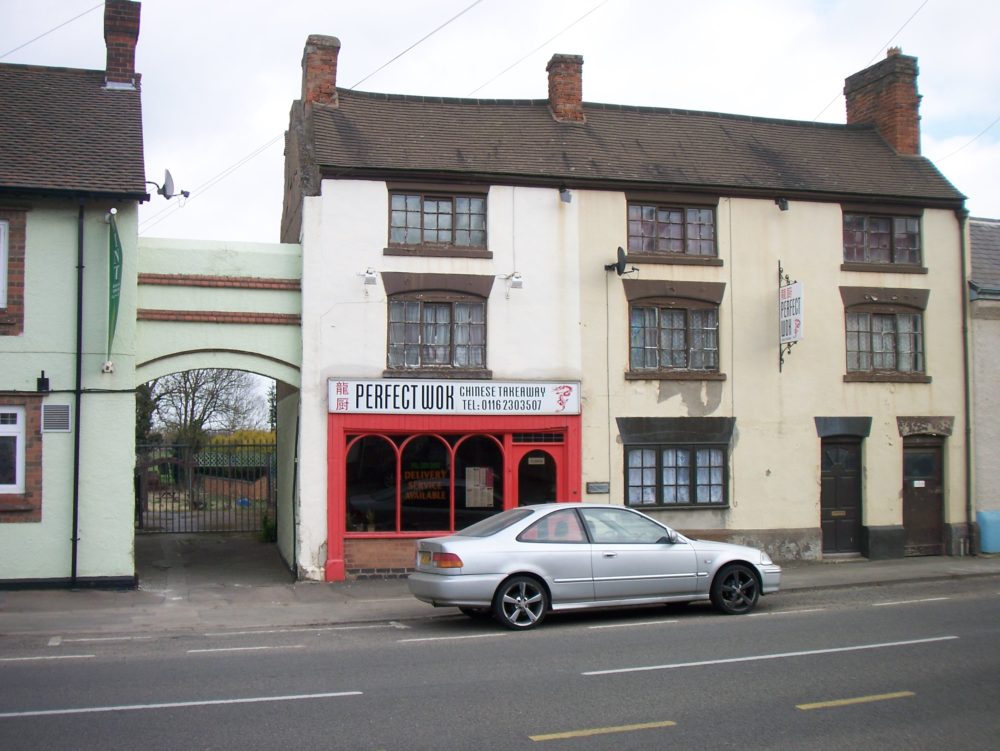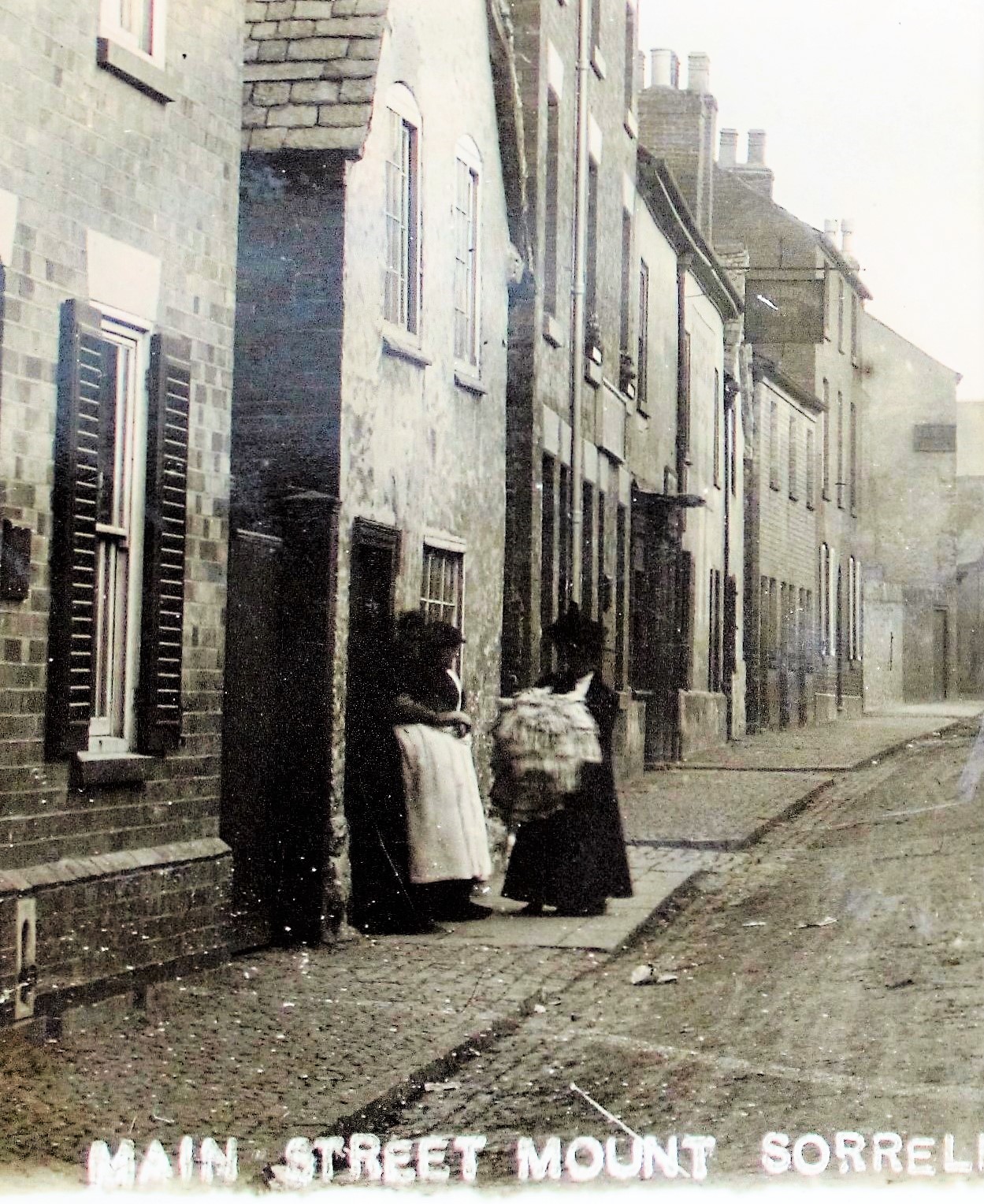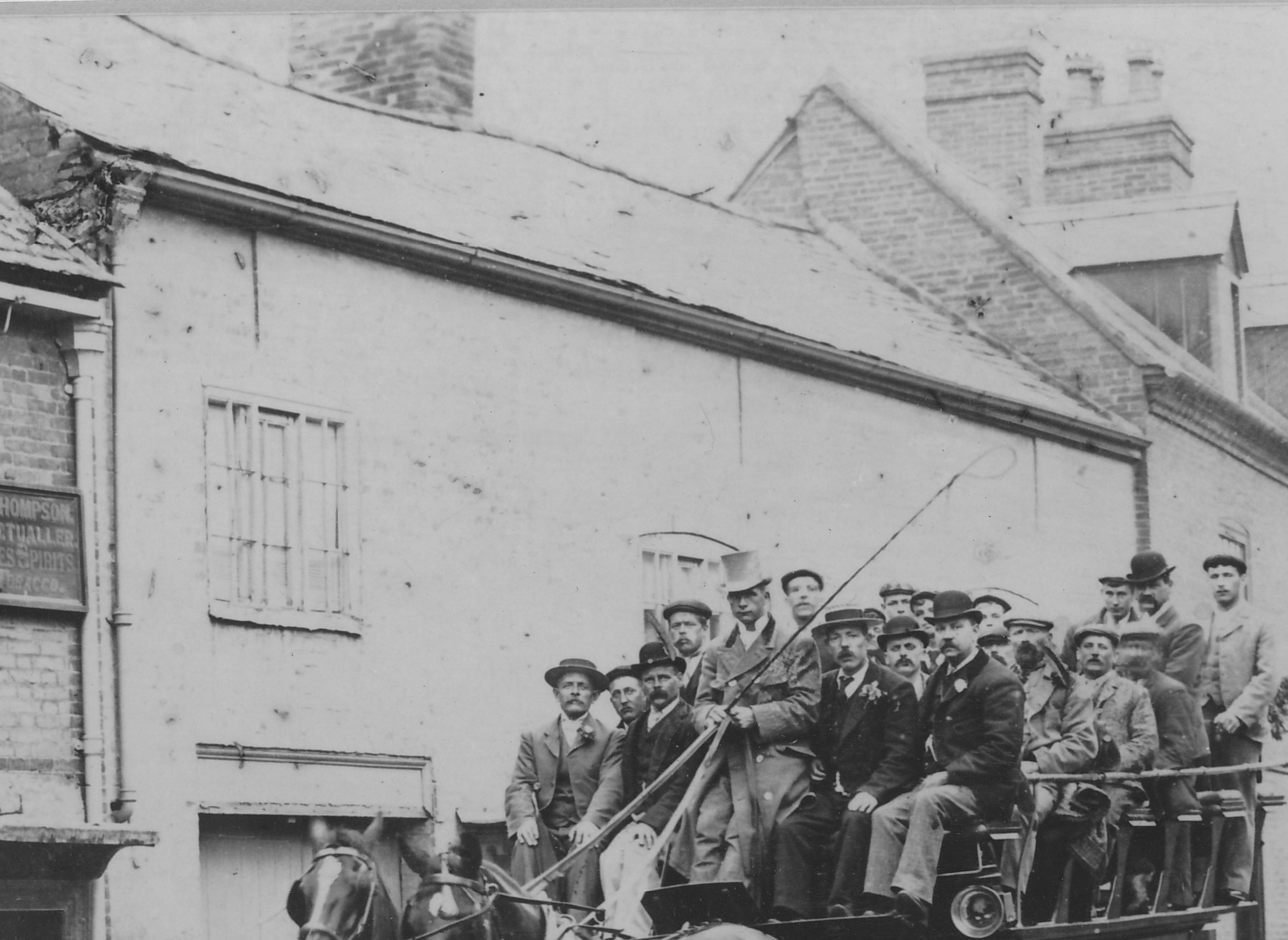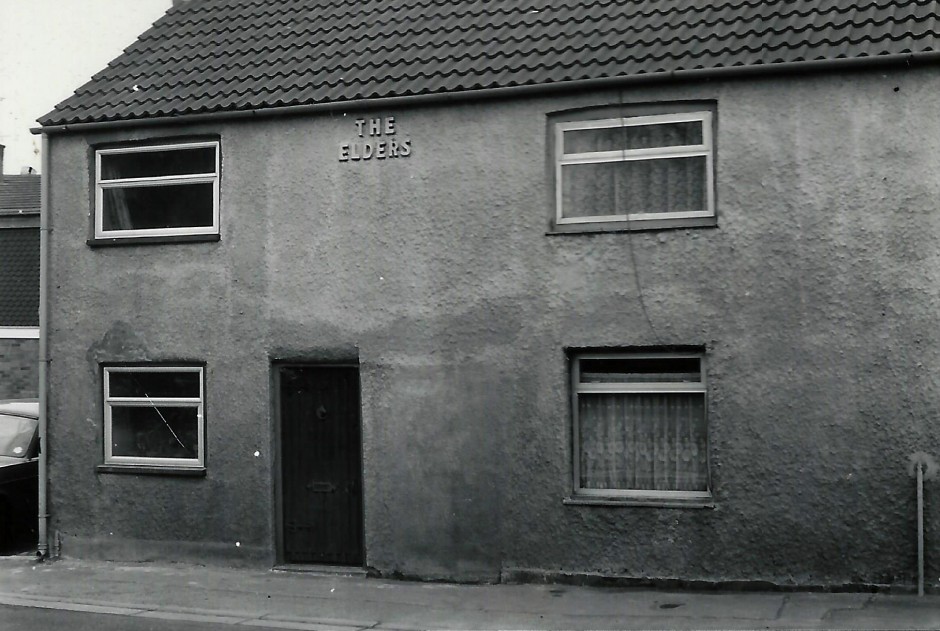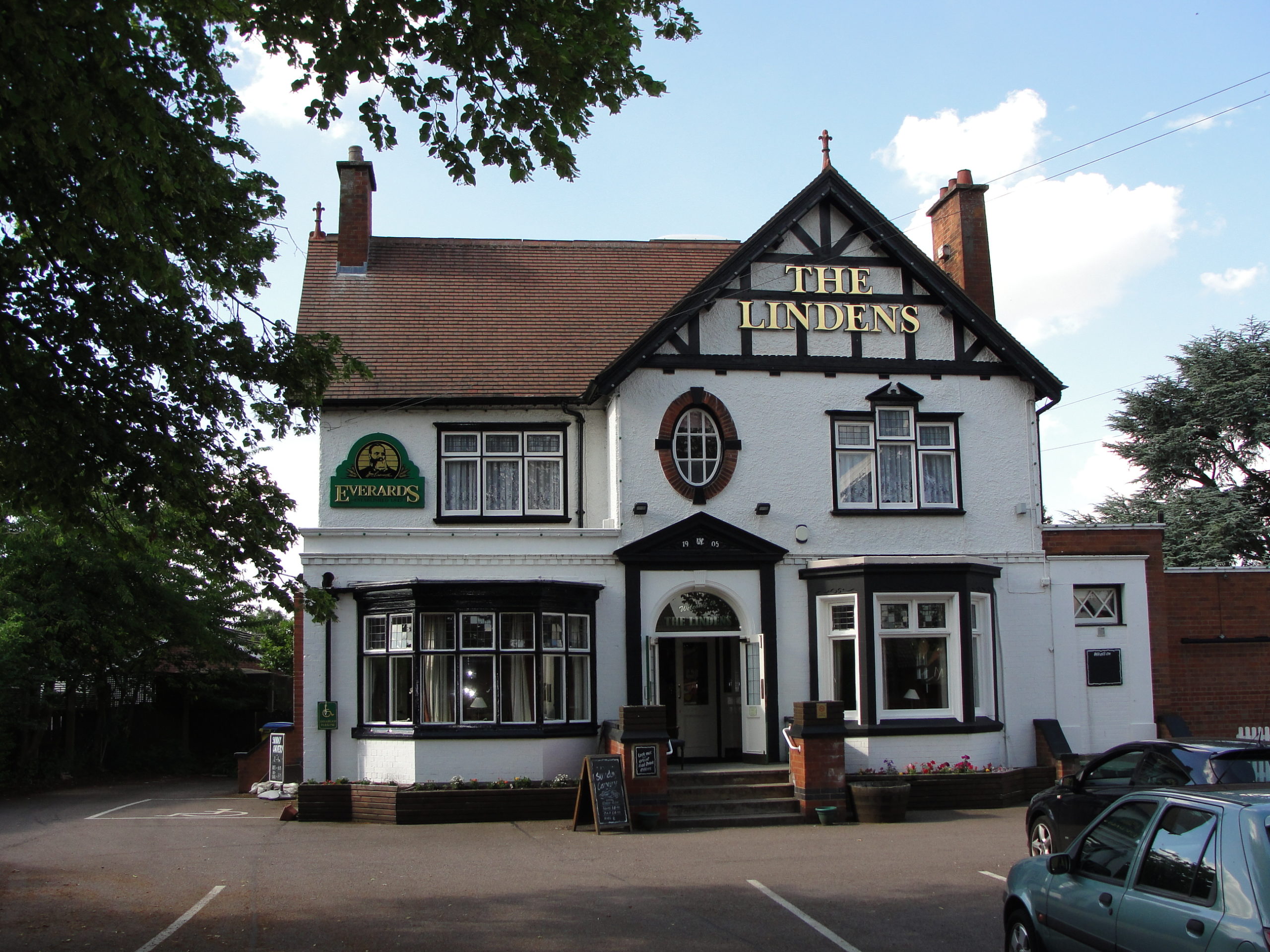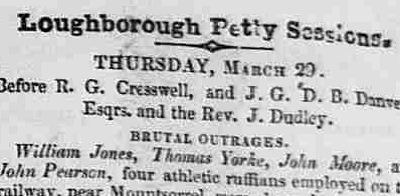There was an earlier Swan Inn in Mountsorrel mentioned in a report by the Commissioners of Charitable Uses, dated the 27th day of September 1687. Rent from the premises was paid into a charity called the Town Rents.
The Swan today was originally called the Nag’s Head. The building is a late 17th century listed building, and there is was? a date, in Roman lettering, of May 2 1688 on the window at the back of the pub. In this photo from the 1970s there also appears to be some sort of inscription beneath the render and above the window .

The earliest record we have of the Nag’s Head is from the 1760s when it was owned by the mother of William Gibbons.
William married Sarah Cross on 1st May 1759. The burial of their first child William was recorded at the chapel of St John the Baptist (St Peter’s church now) on September 20th 1759. It is not known where he was buried as the chapel had no graveyard until sometime that year. Another son also called William was born in 1775.
In a 1767 settlement examination of William Gibbons he declared that he was born in the North End of Mountsorrel but in 1761 he lived in his own house, the Plough[now BOX KITCHEN], in the South End. After his mother died he inherited the Nags Head in the North End. He moved there and stayed for about 14 days before selling it for £200.
It was advertised in 1774 :
To be sold by auction on 7 March 1774 “The Nags Head”, Mountsorrel, including a good malt office and stabling for 20 horses etc
And again in 1825:
To be sold by auction at the house of Mr George Briggs known by the sign of the Nags Head in Mountsorrel on Friday 18 November at 4 o’ clock in the after noon. All that old established and well known public house now in full business called the Nag’s Head situate in the middle of the town of Mountsorrel with stables outbuildings etc.
Also a tenement adjoining and a right of common on Mountsorrel hills
George Briggs was the landlord in 1812. He ran the pub with his wife Lydia until he died in 1833, aged 49. They had three children, Sarah who died in 1822 age 1 year, Mary who died by accident in 1824 age 6 years and Samuel who died in 1825 age 9 months. Their headstone can be seen in the churchyard of St Peter’s church.
After the death of her husband Lydia took over the running of the pub until she died in 1847

The next landlord and landlady were Charles and Sarah Goddard. Charles doesn’t appear to have been the ideal landlord.
In August 1850 the magistrates refused to renew the license for the Nag’s Head, considering that Goddard, the present landlord, (who was convicted a few weeks ago of allowing drinking and fornication on his premises on the Sunday) was an unfit person to be entrusted with it.
In 1852 Charles Goddard was fined 20s for keeping his house open after 10p.m. In 1854 Goddard was involved in the death of a Mr Roper, a confectioner, who was with his stall at Mountsorrel Fair. Having business in Leicester he got a lift with a Mr Boyer and Goddard who were going to Leicester for some porter. Roper had a glass of ale in the Nag’s Head and quarter of a pint of gin in Leicester. On the way back he sat on a porter barrel at the back of the cart. At the top of Wanlip Hill he fell off the cart. Goddard went to pick him up but he said ”let me lie, I’m a dead man.” However they placed him on a porter barrel and carried on. At Mountsorrel a number of youths ran after the cart shouting, believing Roper to be intoxicated. The doctor on examination found bruises on his body and that his legs were powerless. He never rallied, but became gradually worse and died on Sunday morning. After his death rumours were prevalent that he was treated very roughly by Goddard and Boyer after the accident, but the jury returned a verdict of ‘Accidental Death’
In 1855 Charles and Sarah Goddard were both convicted of being drunk and disorderly. In the same year Charles was charged with keeping his beer house open in the afternoon. PC Bosworth found a man in the house tipsy just after 5 o’ clock and the servant girl standing by his side with a jug of ale under her apron.
After Charles died Sarah carried on as landlady of the Nag’s Head but later moved to Leicester where, in 1861, she was landlady of the Junction Inn
For the next 20 years the pub’s landlord was John Boulton who as well as being a victualler was a farmer of 40 acres employing 2 men and a boy.
He was fined five shillings in for selling spirits at half past eleven on Sunday morning. Sergeant Bosworth said that there were 30 men drunk at Mountsorrel; the bench retorted you ought to have brought them all here!
After he died in 1877 the next landlord that stayed for any length of time was George Wilcocks, In the early 1890s he moved and took over the Bull’s Head in Syston . When he died he was still owed the £300 he had loaned to his son in law Henry Barrs, landlord of the Bull and Mouth.

When this photograph of the annual holiday to Nottingham was taken in July 1899 William Thompson was the landlord.
Jonathan Brewin was landlord from the early 1900s until he died in 1921 when his son in law John Geary took over for a few years.
In 1935 the landlord John Hughs was summoned for being drunk in his own pub. His wife accused him of drinking a bottle and a half of whisky in the morning. He replied ‘Do what you like I am leaving in two months’
In the 1930s and 1940s there was an active darts team

Back Row: Mr Musson-Geo Lindsey-Ernie Chapman-Laura Fletcher-Hilda Parker-Mrs Riley-Florrie Astley- Loll Fisher-Beck Hawksworth-Kitty Walker Middle Row: Mr Porter-William Astley-Geo Hardy-Dick Watson-?-Nellie Mee-Percy Perters-Mrs Spiby- Mrs Gilbert Front Row: Harold [pub singer]-Gert Astley-Ernie [pianist]-Gertie Parker [landlady]-Mrs Hardy-Tom Hardy-Mrs White
In 1961 the licensee, Peter Morris, had extensive alterations carried out . He didn’t find the treasure supposedly hidden away by a former licensee, to stop his beautiful young wife getting her hands on his money, but he did find a large number of cases of stuffed fish !

There was some lively entertainment in the 1970s!!


After two brothers, David and Alan Winser who lived next door to the pub purchased it in 1990 the Nag’s Head was no more.
They changed its name to The Swan.
They were both real ale enthusiasts so thought what better than to open a pub next door and sell our favourite Theakston beers. The pub was refurnished but like the previous alterations carried out in 1961 they failed to find the gold that a previous occupant is said to have hidden in the walls to keep it from his wife. The pub menu offered a superior cuisine and every week a slimming ‘Hip and Thigh’ dish was created for the menu by fitness expert Rosemary Conley.
The photo shows Alan, on th left, and David discussing the menu with Roemary Conley


